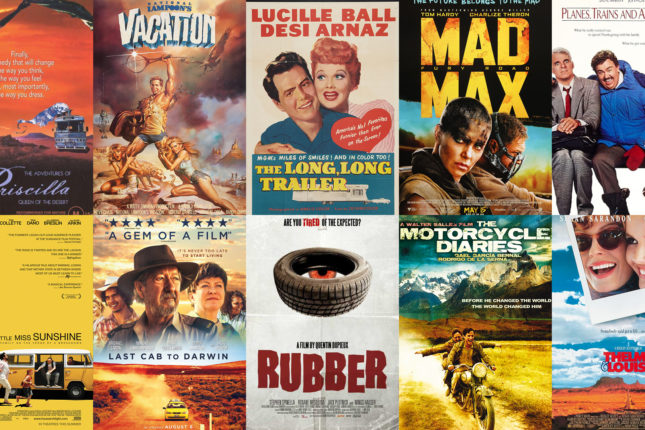The Rise and Fall of John DeLorean
Written by Mick Bolognese | June 22nd, 2015
Forget The Wolf of Wall Street: my prediction is that one blockbuster waiting to happen is the rise and fall of John Zachary DeLorean.
Many of you probably read that and thought ‘hang on, I know that name!’ And you’d be right, because John DeLorean was the American engineer-turned-businessman who gave his name to the stainless steel, gull-winged sportscar chosen by ‘Doc’ Emmett Brown as his time machine in Back to the Future. But, as big a fan as I am of the science fiction trilogy (which turns 30 this year!), I’ll try refrain from any more references to it. This is the story of DeLorean and his car.
Born to an Austro-Hungarian mother and a Romanian father in gritty, industrial Detroit (the USA’s automotive capital, where his father Zachary worked at the Ford factory), John grew up with an interest in cars like so many other Detroit kids. He went on to study automotive engineering at university, though he was 27 before he completed his masters: again, like many of his peers, three years of service in the Army during the Second World War (and a brief stint as an insurance salesman) interrupted his studies. But once he got his first job in the automotive sector, things really fell into place for John. He soon moved to General Motors, one of the biggest manufacturers in the world, to work as a design engineer at Pontiac. He was really good. He patented a lot of small but significant innovations (one I’m particularly grateful for is the ‘lane change indicator’ – the one that automatically switches off once you’ve changed lanes, still found in most cars). He also led the engineering teams that designed some highly successful new models. The Pontiac GTO, the first true muscle car, was one of these. Accolades and swift promotions followed, and at 40 he found himself in charge of Pontiac – the youngest ever divisional head at General Motors. In 1969 he was promoted again, this time to head Chevrolet, GM’s biggest division.
By the early 1970s, DeLorean seemed to be on top of the world. His rise to general manager of GM (which at the time, in automotive terms, was just about equivalent to being President of the United States) looked to be only a matter of time. He was also a bit of a media darling: very tall and with a strong, square, surgically-enhanced jawline, DeLorean dated Hollywood starlets and hung out with Hollywood tycoons. But for reasons that are still unclear, he abruptly left GM in 1973. Denouncing the car industry’s thirst for more powerful cars that were less well-built and less safe, he announced he would form his own company that would give the world an ‘ethical sports car’.
The world, it seemed, believed him. Early designs, by Italian Giorgetto Giugiaro, revealed a low-slung, edgy, gull-winged, stainless steel machine that looked like it was about to take off into space. People got excited. And, shrewd businessman as he was, DeLorean capitalised on this excitement by convincing the British government to heavily bankroll his newly formed DeLorean Motor Company in return for setting up the production plant in the economically depressed Dunmurry region near Belfast, Northern Ireland. It was one of DeLorean’s finest moments… but it was also the beginning of the end.
Delay followed delay, as DeLorean learned just how complex setting up a motor manufacturing operation from scratch is. It was 1981 by the time his largely-unskilled workforce of around 2,000 rolled the first DeLorean DMC-12s (‘DMC’ stands for ‘DeLorean Motor Company’, and 12 stands for the retail price in thousands of USD) off the line and onto shipping containers bound for the USA. The buzz around the car had waned a bit by then. The advertised performance was far inferior to DeLorean’s initial claims: this baby really struggles to hit 88 miles per hour (sorry, no more Back to the Future references, I promise). The ability to guarantee occupant safety in a 100 km/h head-on-collision – one of the original selling points – remains a dream to this day. And the retail price had soared to over double the $12,000 promoted in the very name of the car. Sales were slow, and the fact that the entire first shipment had to be recalled due to manufacturing faults didn’t help. The DeLorean Motor Company was running out of money fast, and coming under increasing pressure from the British Government’s receivers (DeLorean would later claim that Margaret Thatcher’s government wanted to shut him down because of suspicions that his largely Catholic workforce was financing the IRA, the Irish Republican Army). The company was declared bankrupt, and production ceased in 1983, but not before DeLorean could ‘go out with a bang’.
I’ll be kind to DeLorean, and say his last attempt to save the company was ‘unorthodox’. In a video you can find with relative ease on YouTube, he was captured negotiating a 100-kilogram, multi-million-dollar cocaine deal in a Los Angeles hotel room. ‘As good as gold’, says DeLorean in the video. Unfortunately for him, the deal was an FBI setup, and was followed by a very public arrest and trial. He was eventually found ‘not guilty’, on the grounds of ‘police entrapment’, as his lawyers argued that the FBI had taken advantage of DeLorean’s notoriously fragile economic position to orchestrate his arrest, but there was very little he could do to salvage his reputation. He never made any more cars. He spent much of his later life living on a very nice estate in New Jersey and fighting legal battles connected to the DeLorean Motor Company that eventually left him bankrupt, before his death at 80 in 2005.
A DeLorean DMC-12 is featured in Pole Position, the museum’s latest display, until 19 July 2015.


 Show all
Show all Read this post
Read this post

 Visit
Visit